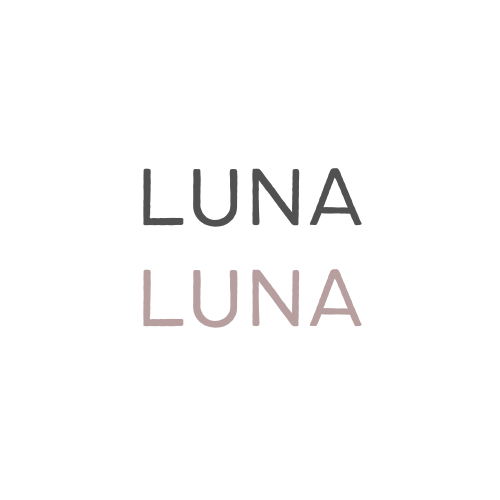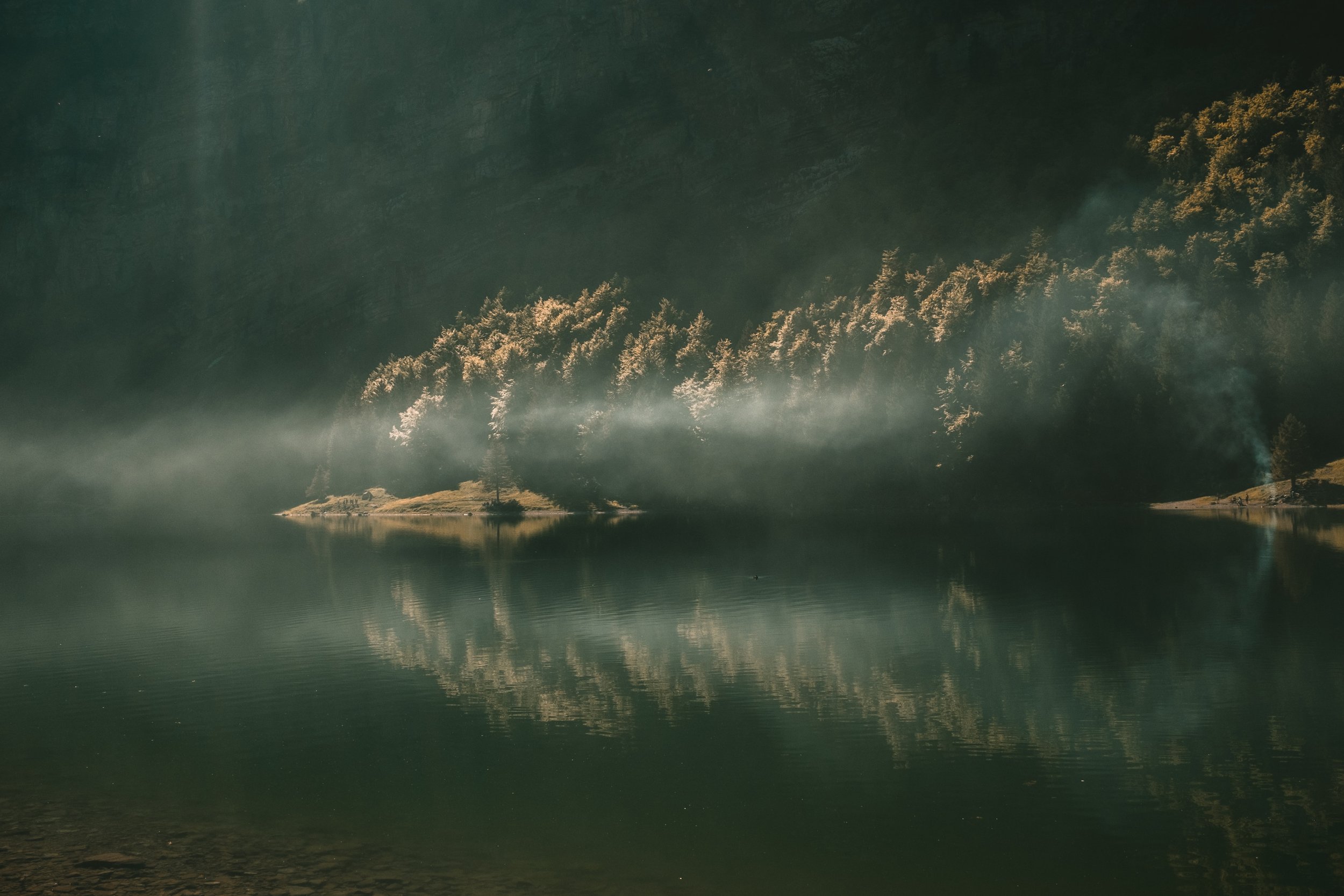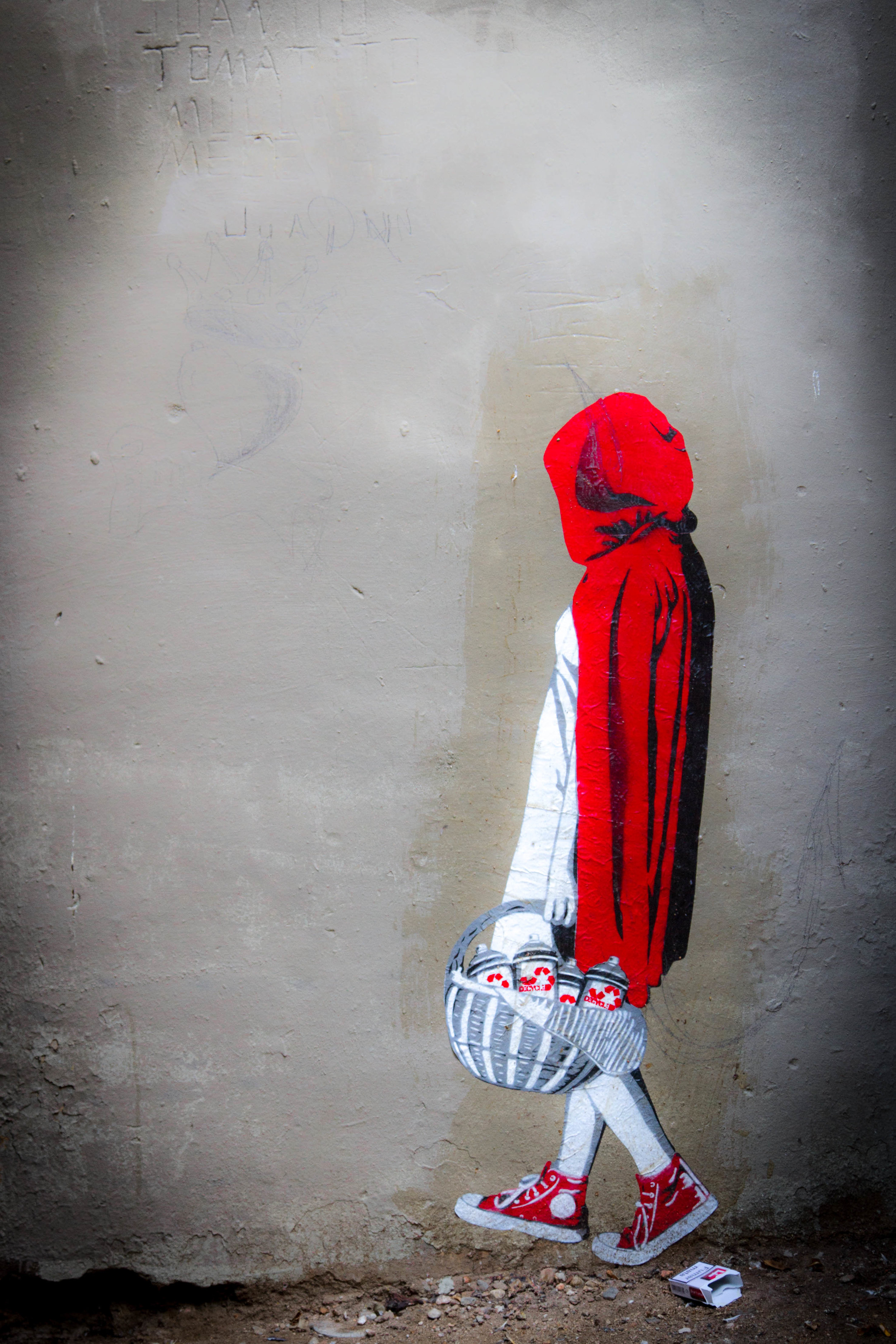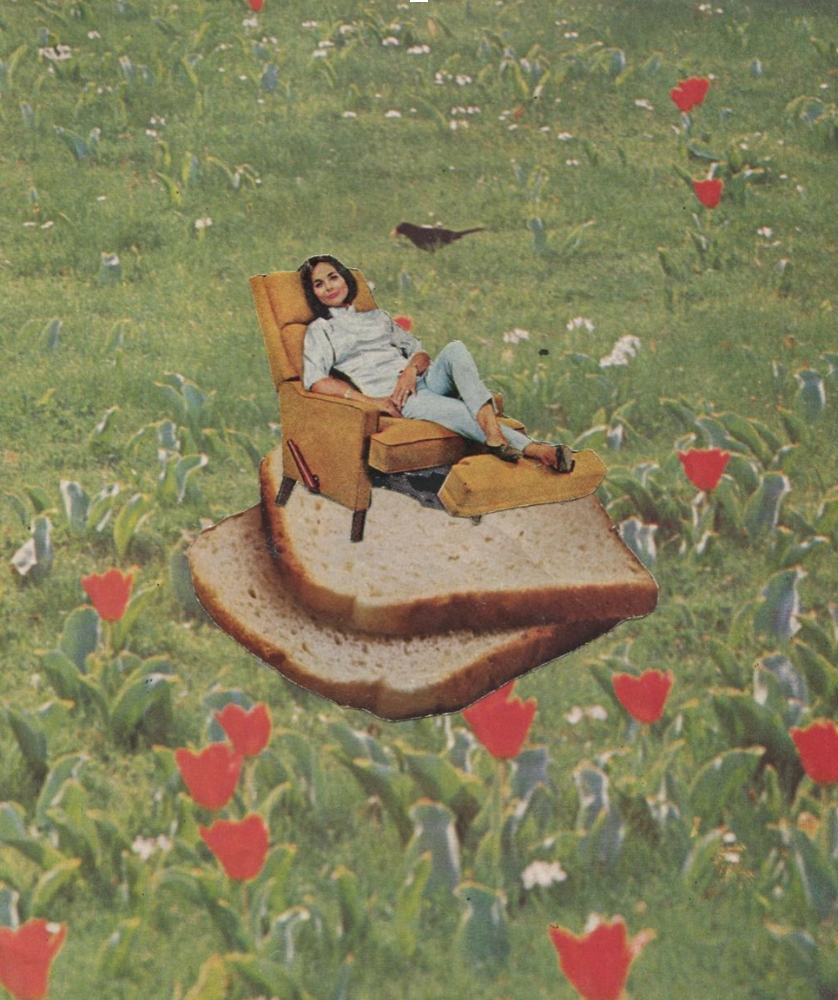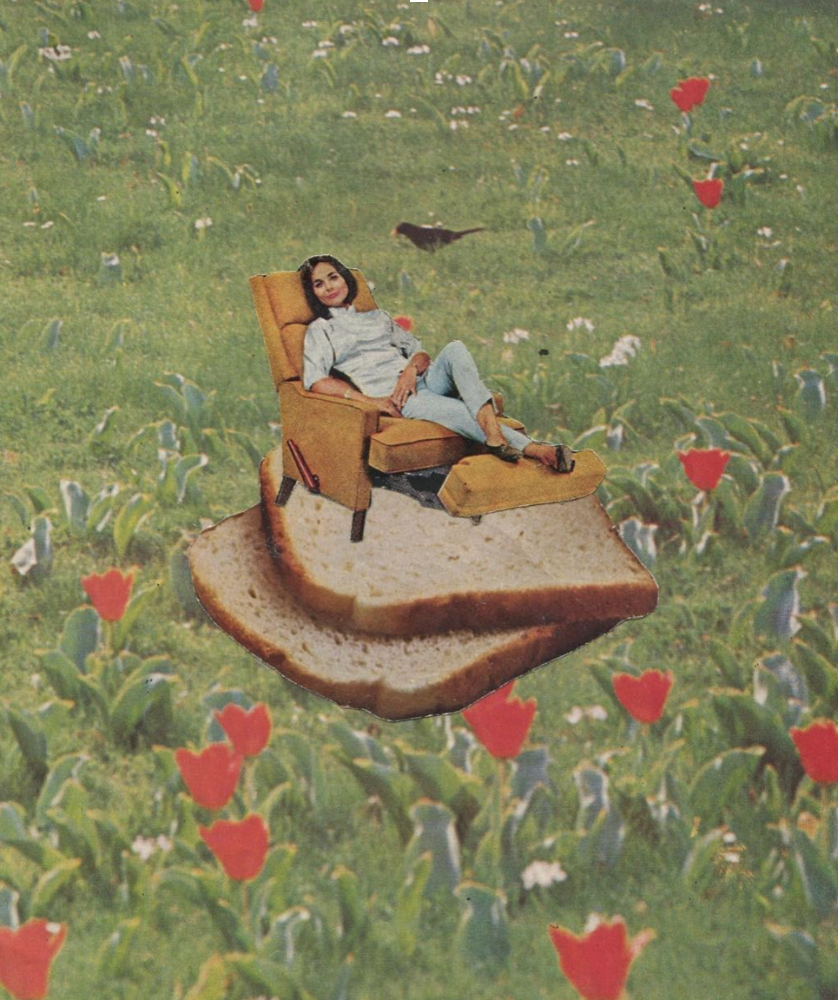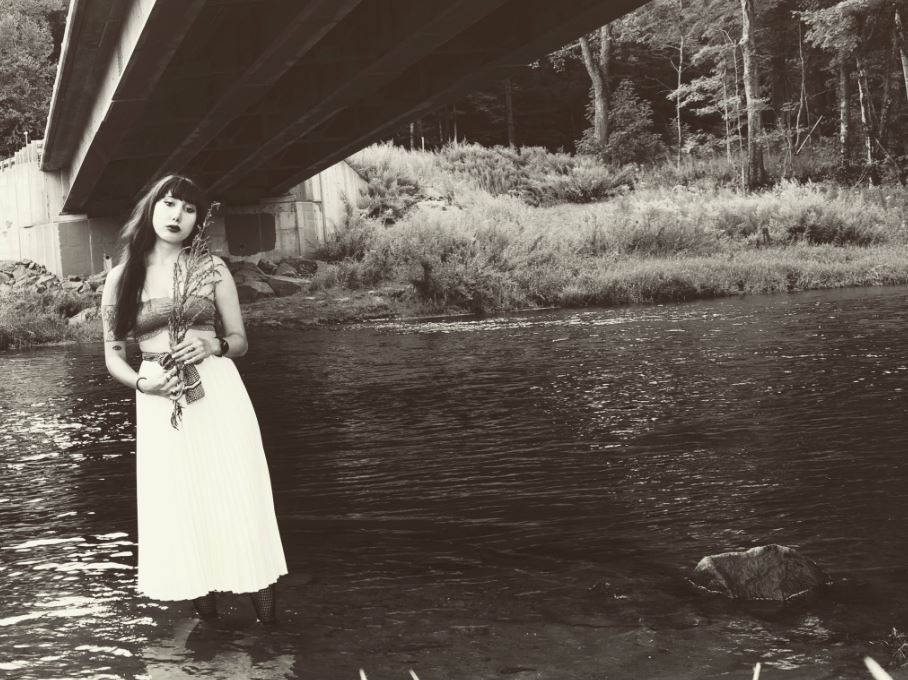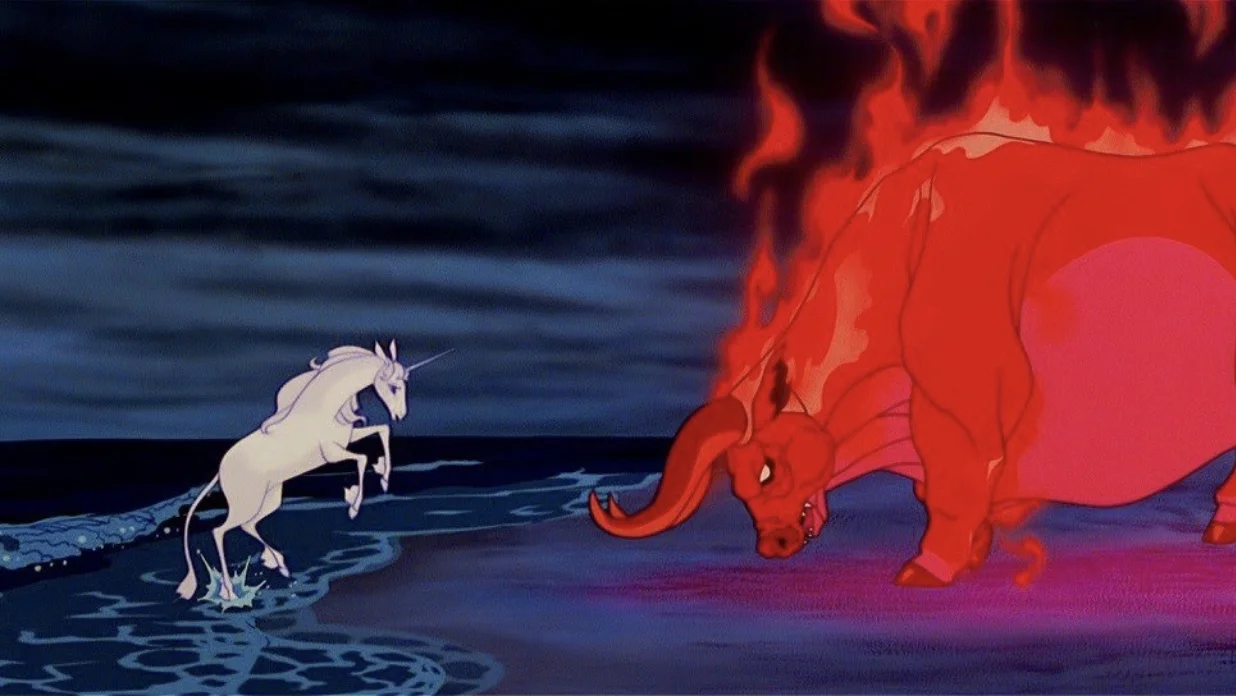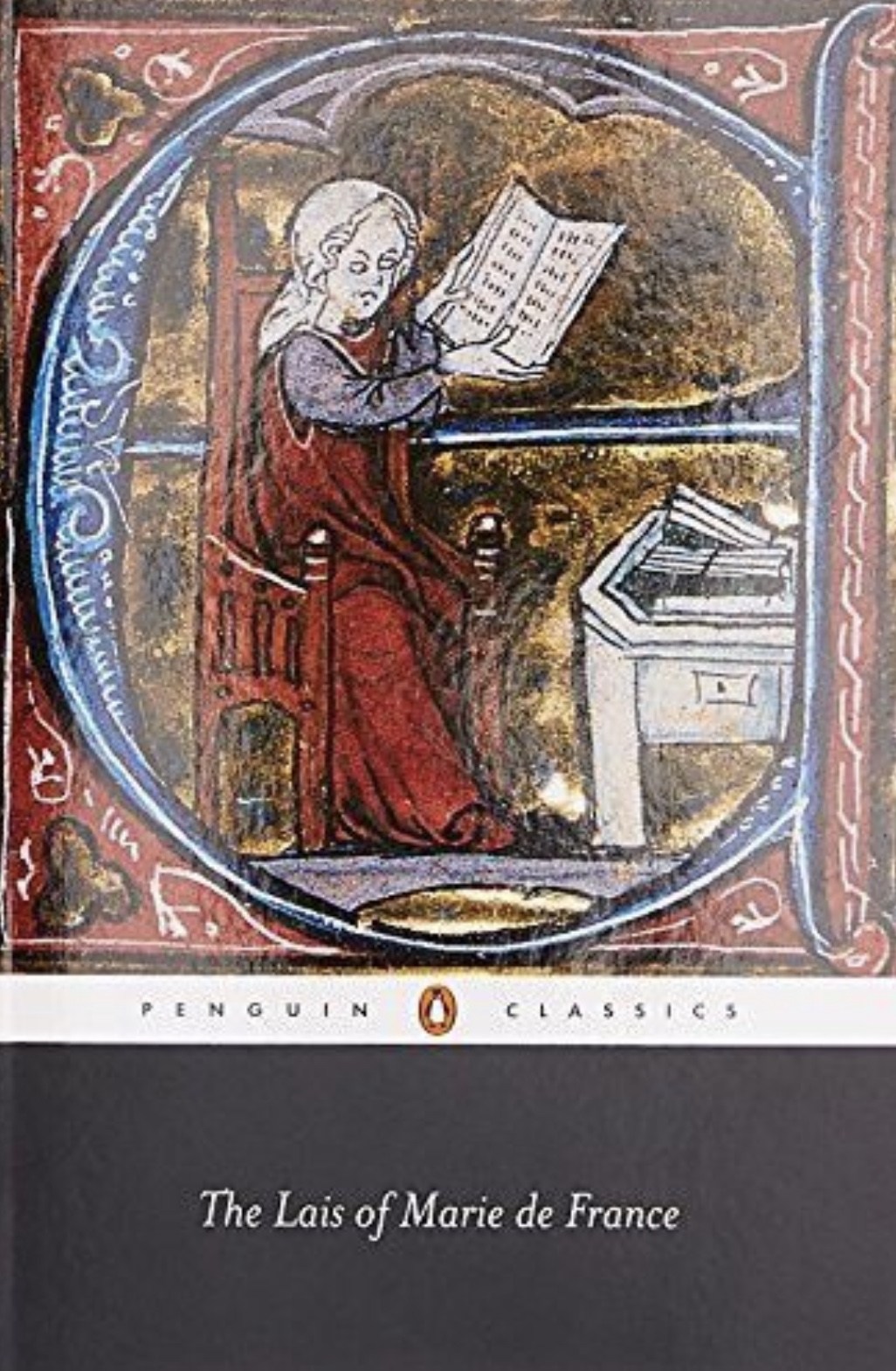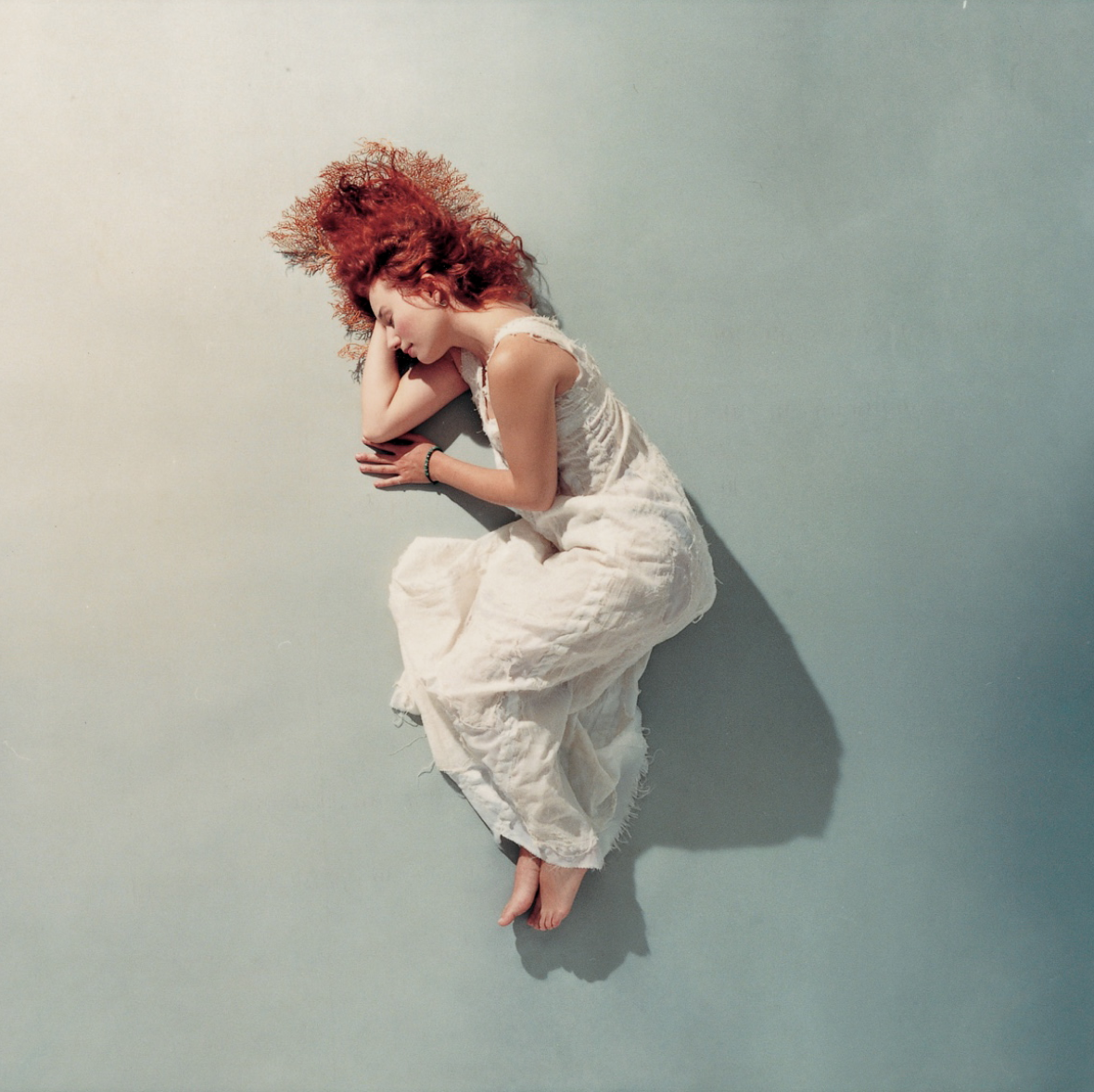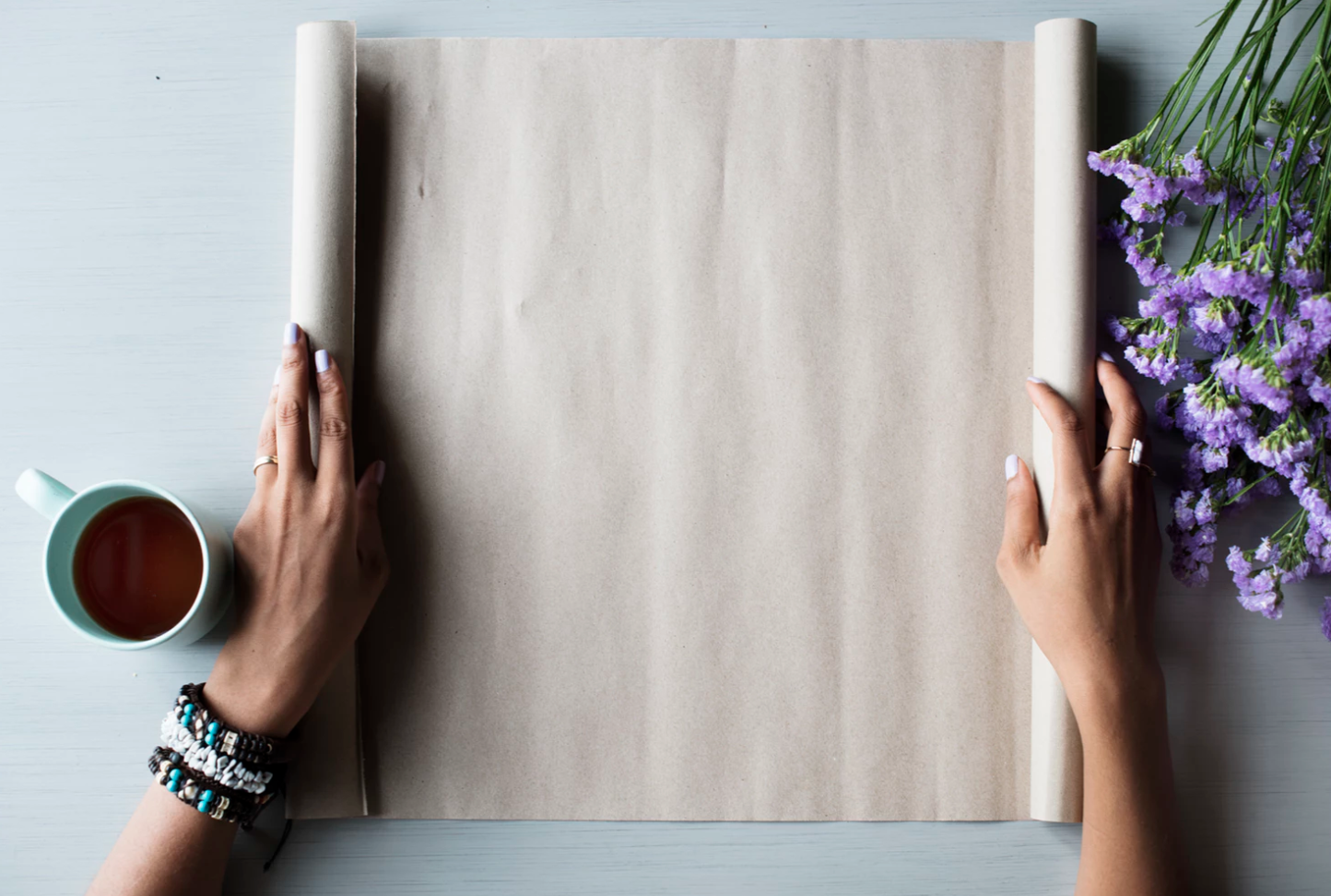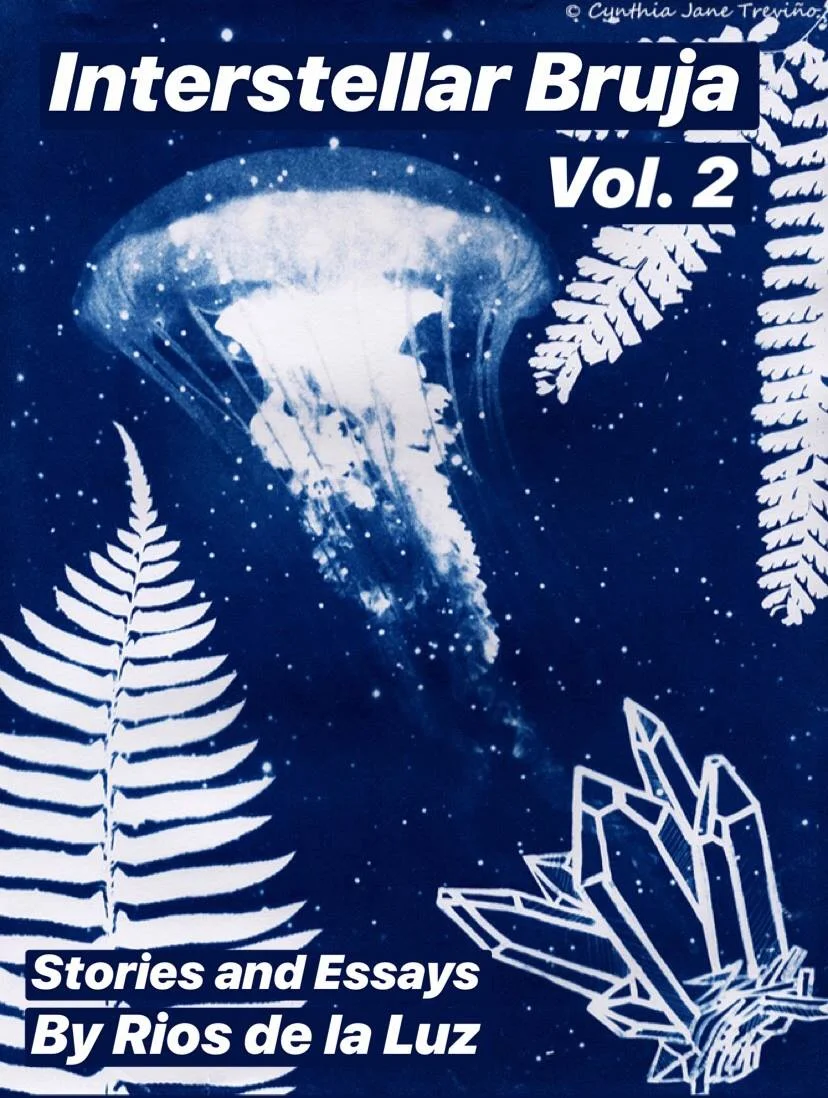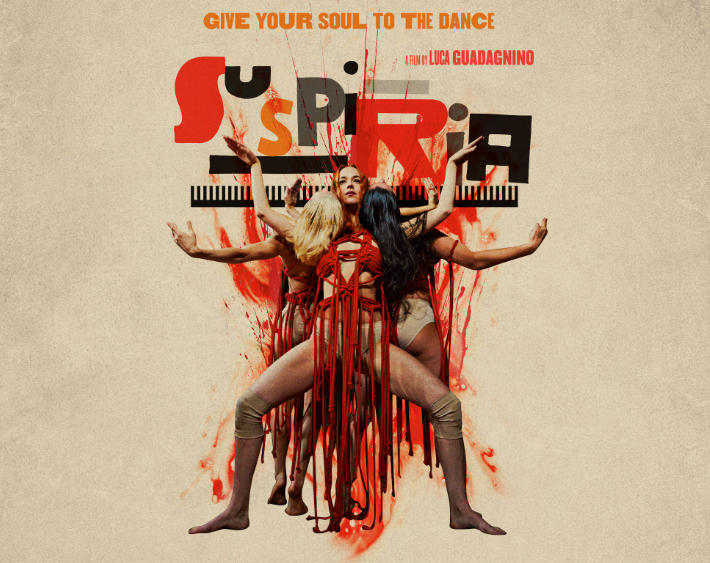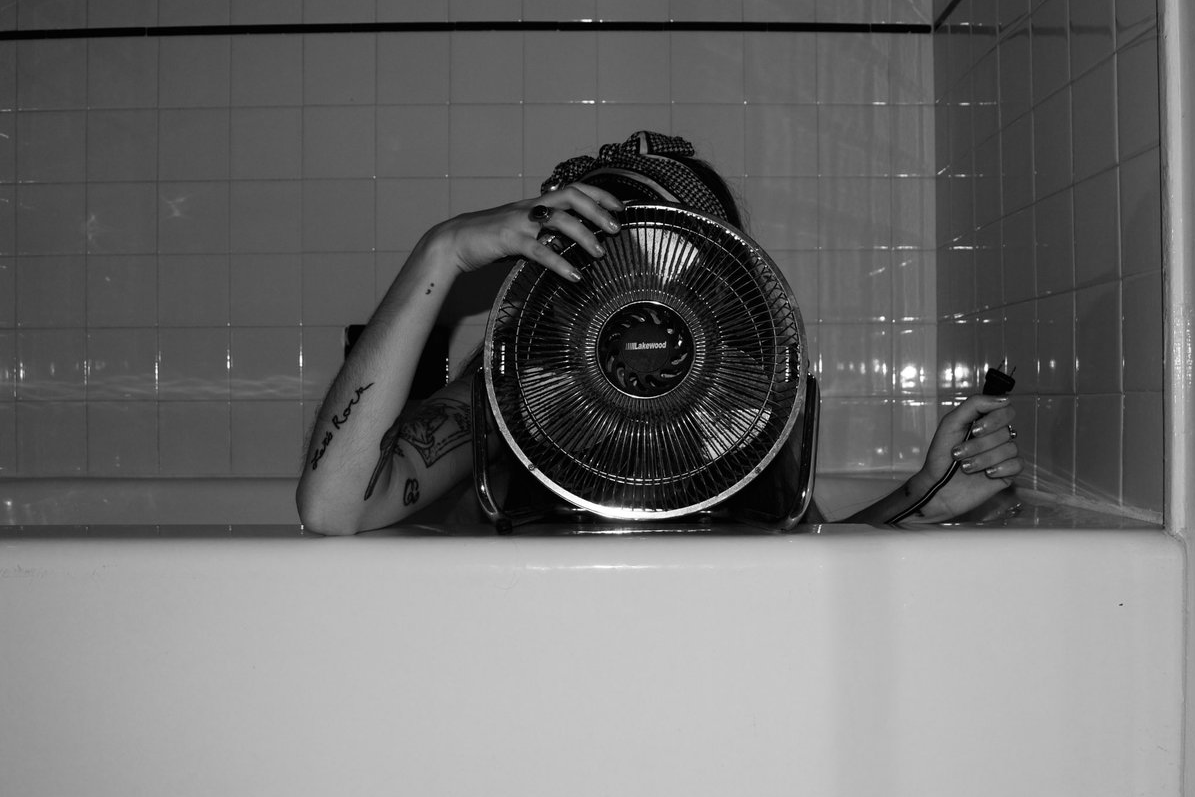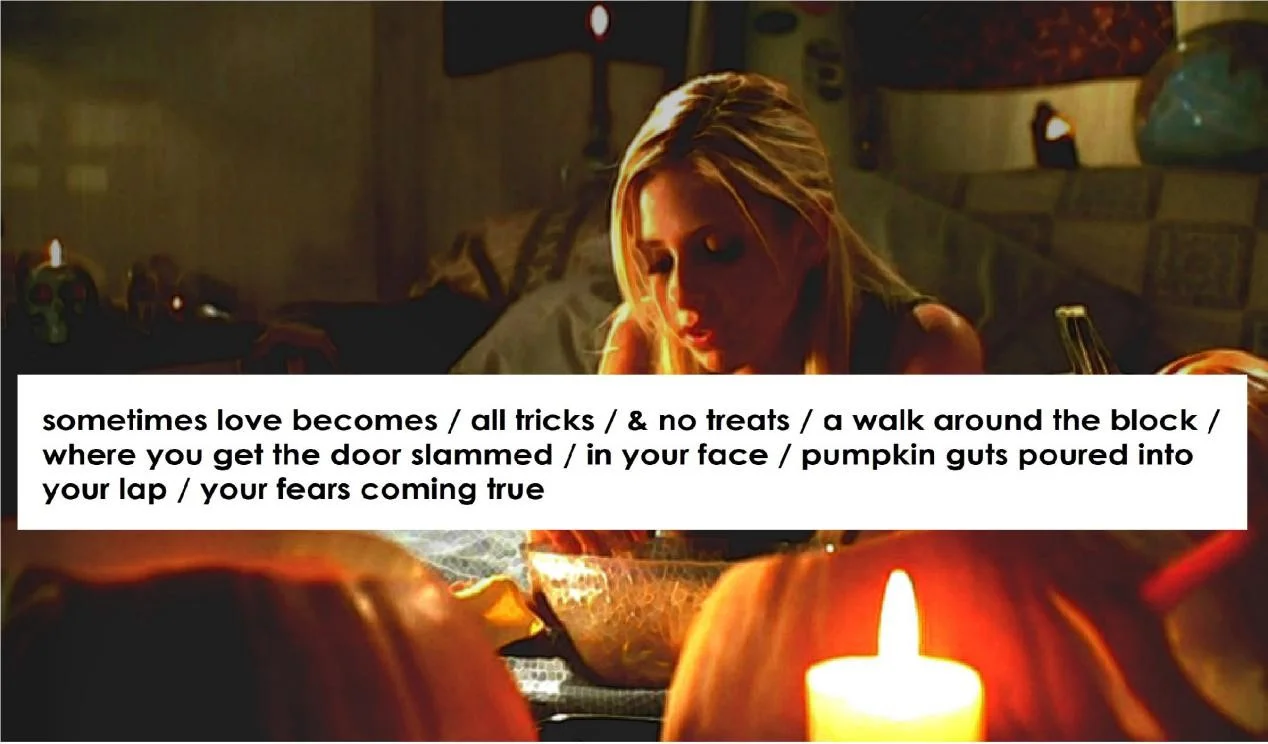While the bruise of men is present in these poems, there are great alliances with women, “Sister says I touch/ and I destroy. ” The aspect of doubling is in this poetry, but women aren’t harmed by their doubles, rather, they feed of each other’s prowess. The twinning of the speaker’s self adds to the labyrinthine structure of the book, so though you encounter a new scene is each hole and crevice, there is still that familiar ache of letting go and the hope of regeneration.
Read MoreImage by Ignacio Martinez Egea
A Short Monster-Themed Reading List
**Monique Quintana** is the author of Cenote City(Clash Books, 2019), Associate Editor at Luna Luna Magazine, and Fiction Editor at Five 2 One Magazine. She holds an MFA in Creative Writing from CSU Fresno and is an alumna of Sundress Academy for the Arts and the Community of Writers at Squaw Valley. Her work has appeared in Queen Mobs Teahouse, Winter Tangerine, Dream Pop, Grimoire, and the Acentos Review, among other publications. You can find her at [moniquequintana.com][1]
Read MoreChristine Shan Shan Hou In Conversation With Vi Khi Nao
BY VI KHI NAO
in conversation with CHRISTINE SHAN SHAN HOU
VI KHI NAO: How would you describe your poetry and your art (collage)? Do they seem similar to you? How close do you feel to Dadaism? Is there a particular literary movement or artistic movement you wish had been invented?
CHRISTINE SHAN SHAN HOU: I look at both my poems and my collages like miniature worlds—each filled with their own characters, tastes, textures, and elements of strangeness and love. However, I actually feel like my poetry and collage are quite different from one another; my poetry—specifically the process of writing poetry—feels heavier, darker, whereas my collages feel lighter and more directly pleasurable. Writing poetry is hard. Collaging is fun. I don’t feel particularly close to Dadaism. I remember studying them in college and being very excited at first, but now I look at them and think: Look at all those old white men! Now that we’ve seen the first image of the black hole, I wonder: What would movement look like in a black hole?
VKN: Your collection, Community Garden For Lonely Girls, shows that you have a natural linguistic impulse to produce words/thoughts that mirror each other—as if you were trying to use the rhetoric of repetition to create content by allowing it to erase itself through doubling. For example, lines such as “my ancestors’ ghosts have ghosts” (p.3), “my split ends have split ends” (p. 4), “If I lay here, how long will I lay here?” (p. 18), “Act without acting out” (p.54), etc. Do you prefer sentences/lines that never look at each other or always look at each other?
When you write these lines, I think that your poetry uses symmetry as a way to acknowledge the lexical self they haven’t been able to access; when a particular word repeats itself in the same context, it brings something out. What do you hope to bring out? In each other, meaning poetry and yourself.
CSSH: I love this question, this image, of two sentences/lines looking at each other. It brings to mind an artwork by the Korean artist, Koo Jeong A. She made this one piece called Ousss Sister (2010) where two projections of the full moon are facing each other within a very narrow space. It is so bewildering, this concept of a self without eyes looking at one’s self. Is this still considered “looking” if one can’t see? Does one have to have eyes in order to have a face? I prefer sentences that look at each other, even though my sentences don’t always have eyes. Meaning arises from the act of looking. Repetition ensures its existence. Where there is existence, there is possibility bubbling beneath the surface. When I repeat words within sentence structures I am suggesting a possibility. A possibility for what? I don’t know.
When people read my poetry their hair grows a little longer.
VKN: That is a mesmerizing image from Koo Jeong A. It reminds me of a pair of lungs. If your collages and your poems were to arm-wrestle each other and the yoga instructor/practitioner in you was forced to be the ultimate referee, who would win that tournament? And, ideally, which two aesthetic competitors would you like to see compete with each other in a match? Would you prefer to be the cheerleader or the umpire? If the winner between the two mentioned competitors (collages & poems) is the one who is able to break a reader/viewer’s aesthetic heart the fastest, which one would it be?
CSSH: My collages would definitely win! My visual art feels lighter and not so bogged down by my past, by my thoughts, or by the heaviness of the language in the air! When I make collages, I am often listening to a podcast, or music, or have a tv show on in the background, all of which feels good for my brain, whereas when I am writing poetry, I can’t have any other distractions. I have to be very in it. One could argue that this extreme awareness of the present when writing poetry seems more mindful than the multitasking of collaging, but ultimately for me, the collage process is much more enjoyable, and the yoga instructor in me will lean towards the direction of joy. I think my collages would break the reader/viewer’s aesthetic heart the fastest.
I would love to see film go head-to-head with any form of live art.
VKN: Why do you want your readers’ hair to grow a little longer? I would hope it would grow shorter, to defy the law of gravity or the law of expansion.
CSSH: Honestly, I don’t know why! It was just an image that floated into my head. I think it’s because I equate growing hair to growing older, which also means growing calmer.
VKN: You are currently a poetry professor at Columbia. Do you enjoy teaching? Would you ever play a prank on your students? If so, what would be one prank that would bring out your impishness? What collage of yours or poem of yours would be a great example of a prank? What poem or collage of yours (or someone else’s) would be equivalent to this prank? And, what is the best way for a student of the arts or in general to express rebellion?
CSSH: I do enjoy teaching. It is very invigorating to be in a room with young people who are as excited by poetry as me! However, to be honest, I prefer teaching yoga over teaching poetry. I’m not much of a prankster, but the poem that is closest to a prank is “Masculinity and the Imperative to Prove it” in Community Garden For Lonely Girls
That prank is very funny, but also mean. I think I’m too sensitive for pranks. I realize that makes me sound a little bit like a wet blanket, but I am ok with that. I think the best way for a student of the arts to express rebellion is to pursue the practice outside of the academic institution and at one’s own pace, whether that pace is a sprint or a crawl.
VKN: I view pranks as one way or a tool an artist can use to express him or herself creatively in a comedic fashion. My brother sent me that prank at a sad point in my life, and it cheered me up and made me feel closer to him. I do not view it as a gesture of meanness, as in: shampoo is just shampoo and irritation is irritation and water running down one’s face excessively once every millennium is a divine act of profound charity.
Speaking of visual or kinetic creativity, one can view your visual works on your Instagram: hypothetical arrangement. Can you talk about the piece below? Can you walk us through the process of how you created it? From seed of conception to final product?
How often do you make your collages? I know you have one daughter, but in terms of sibling rivalry (how many of you are there, btw?), has poetry ever fought with you for creative space because you devote more time to one discipline or art form rather than another? You must understand scissors and surgical knives very well. Do you ever feel like you are a surgeon? Have you ever created a collage where you feel like you are performing a heart surgery and the life of this art piece heavily depends on how well you incise? Have you ever cut through the artery of an image and felt lost or lonely or regretful or sorrowful or overjoyed?
CSSH: This collage is called “Self-actualization (in recline).” When I make collages I go through old magazines and start cutting out images that speak to me. I have several categories for images and three of them are: food, women, and seascape/landscape. I don’t remember how I arrived at this final image, but I remember liking the way the red flowers contrasted with the dreary, soft slices of bread and then the ease of the woman’s posture. I like her shimmering periwinkle outfit and her pet bird in the background.
I try to make at least one collage a week, but that doesn’t always happen. I tend to make many collages in a short period of time, or even in one sitting, and then occasionally mess with them for a few minutes every few days, until I feel satisfied with them.
I am one out of four siblings. However I do not see any “sibling rivalry” between poetry and my yoga and/or collage practice. I think they all work in harmony with one another and give each other the time and space to breathe.
Yes! I definitely feel like a surgeon when I am making collages. I use an x-acto knife so I can really get into the details. And there are so many pieces I’ve considered “ruined” or “dead” because I was too impatient with the cutting of a very precise detail. But then I immediately let it go. I try not to get too precious about paper arteries.
VKN: Will you break down the poem “A History of Detainment” (p. 72) or (“Masculinity and the Imperative to Prove it,” or why this poem may feel pranky to you) from your collection, Community Garden For Lonely Girls, for us, Christine? Can you talk about the process of writing that poem? Do you recall writing it? What was it like? Where were you emotionally? Intellectually? Were you preparing a meal? On a train? Or what piece of writing/art inspired it? Did it take you long? And, could you talk to us about this line: “While navigating the meadow of hypotheticals, I tripped and broke my arm” (p.72). If you broke your arm, what one line from a canonized poet would you want to scribble on your cast?
CSSH: “A History of Detainment” is so long and heavy and my brain is so tired after a full day of running around with my kid. But I can say a little bit about “Masculinity and the Imperative to Prove It”: When I was a child, my grandparents owned a Chinese restaurant called Oriental Court inside of a New Jersey shopping mall. Every Saturday night my entire paternal family—grandparents, all of their children and all of their children's children—would eat dinner after the mall's closing hours. After the meal, me, my siblings, and my cousins would run around like crazed little people in the empty mall and play all sorts of games including: "Red Light Green Light," "Red Rover," "What Time is it Mr. Fox?" and "Mother May I."
However, the golden rule was that we had to wait at least thirty minutes after eating before engaging in any physical activity, or you would get sick. When I was a young girl, I was often ashamed of my body. I used to wish that I were white so that I could fit in with the popular crowd; I would make myself throw up because I thought I was fat; and because I was sick a lot as a child, I would view my medical issues as a reflection of moral shortcomings. In other words, I was a very sad child. But at the end of the poem, the sad child is actually a fish. And we all know that a salad can be both a curse and a blessing.
VKN: That’s a very beautiful story, Christine. I understand your tiredness. Perhaps this last question then: What do you think is the best way for one poet to feel at home in a poetry collection by another poet?
CSSH: Poetry collections are like homes unto themselves. I think the best way for a poet to feel at home in someone else’s poetry collection is by taking their time while reading it and listening closely, attentively, to what it is trying to say.
Christine Shan Shan Hou is a poet and visual artist based in Brooklyn, NY. Publications include Community Garden for Lonely Girls (Gramma Poetry 2017),“I'm Sunlight” (The Song Cave 2016), and C O N C R E T E S O U N D (2011) a collaborative artists’ book with Audra Wolowiec. She currently teaches yoga in Brooklyn and poetry at Columbia University. christinehou.com
VI KHI NAO is the author of Sheep Machine (Black Sun Lit, 2018) and Umbilical Hospital (Press 1913, 2017), and of the short stories collection, A Brief Alphabet of Torture, which won FC2’s Ronald Sukenick Innovative Fiction Prize in 2016, the novel, Fish in Exile (Coffee House Press, 2016), and the poetry collection, The Old Philosopher, which won the Nightboat Books Prize for Poetry in 2014. Her work includes poetry, fiction, film and cross-genre collaboration. Her stories, poems, and drawings have appeared in NOON, Ploughshares, Black Warrior Review and BOMB, among others. She holds an MFA in fiction from Brown University.
Manifestation + Healing: The Blossoming Magic of Spring
BY LISA MARIE BASILE
The coming of Spring brings with it all sorts of feelings. For many — like myself — it allows us to shake off the heavy cobwebs of winter’s seasonal affective disorder. It bring with it a sense of opportunity, change, and transformation, as the sun’s warmth melts the icy shell we developed over the dark months. In NYC, at least, and in many wintry parts of the world, that coldness makes you go inward, go quiet; the hibernation leads to an introspection and quietude that — although necessary — can feel isolating, exhausting, and endless.
I welcome the spring’s golden light. I am a new seedling each year, and with each spring I bloom again. I feel my body mobilize, my mind sharpen, and heart soften. The colors, the flowers, the balmy winds, the sparkling light that lasts until late into night — it reminds us of life, potential, growth. Here’s how to harness it:
Use the flowers as a reminder of resilience & transformation.
Everything changes form. We wilt. We bloom. And there’s a certain comfort in knowing that we are flexible and fluid — that everything has the potential to change; most of what we feel is temporary. The pain. The sorrow. The exhaustion.
When what we feel isn’t temporary and can’t be shaken off with the seasons, we can turn to the earth for a lesson in letting the light in: While we may have dark moments (or years), we can decide to unfold, as a flower, to let the light nestle into our petals and stems.
What happens when we let that light in just a bit? Can we find one thing to love or be appreciative for?
Create an herbal apothecary, and let the earth soothe your body.
According to the book A Wilder Life, there are many common herbs which have a multitude of uses. Of course, use only with the permission of your doctor (knowing that these may support or promote health, not cure diseases).
The most popular spring-time apothecary essentials:
Dandelion — Anti-inflammatory and diuretic (eat or drink the tea)
Garlic — Antibacterial, can be used for cleansing wounds (use as oil or in food directly from fresh garlic)
Holy Basil — Provides renewal and energy; is considered an adaptogen, for helping the body handle stress (use as a tincture or tea)
Saint John’s Wort — Mood-stabilizing, antiviral support, and can support the transition between seasons (tea or tincture)
Nettle — May provide support for allergies and immunity (tea).
Peppermint — This is a zesty kickstart for low energy, in addition to providing tummy support (tea or oil).
Take part in a daily manifestation ritual
Throughout the winter, it’s easy to think deeply about the wounds, voids, and shadows of our lives. By spring, the light and energy wake us to the beauty of nature — reminding us that we can create the change we need. We do not always have control over circumstances (like our finances or the daily burdens of life), but we can make space within our hearts for possibility.
The ritual is simple: Get a large jar with a lid (or another container that speaks to you), and each day — perhaps right before bed, or as you wake up in the morning — place a small piece of paper with an intention within the jar. Your intention should be written in present tense; it should be for something realistic, but aspirational. It can be for the physical or the non-tangible:
I have confidence in group settings
I am always making space for kindness and love
I am capable of saying what I want
I am assertive at work
I am a successful writer making enough money for rent, food, and travel
I feel worthy, loved, and respected
I have a beautiful summer beach vacation lined up this summer
If you are seeking more rituals and practices, my book LIGHT MAGIC FOR DARK TIMES contains several — many of which utilize the earth’s natural beauty and energy.
Lisa Marie Basile is the founding creative director of Luna Luna Magazine—a digital diary of literature, magical living and idea. She is the author of "Light Magic for Dark Times," a modern collection of inspired rituals and daily practices and the forthcoming "Wordcraft Witchery: Writing for Ritual, Manifestation, and Healing." She's also the author of a few poetry collections, including 2018's "Nympholepsy." Her work encounters the intersection of ritual, wellness, chronic illness, overcoming trauma, and creativity, and she has written for The New York Times, Chakrubs, Narratively, Catapult, Sabat Magazine, Healthline, The Establishment, Refinery 29, Bust, Hello Giggles, and more. Her work can be seen in Best Small Fictions, Best American Experimental Writing, and several other anthologies. Lisa Marie earned a Masters degree in Writing from The New School and studied literature and psychology as an undergraduate at Pace University.
Photo: Joanna C. Valente
Writing Letters in the Age of Loneliness & Violence
Joanna C. Valente is a human who lives in Brooklyn, New York. They are the author of Sirs & Madams, The Gods Are Dead, Marys of the Sea, Sexting Ghosts, Xenos, No(body) (forthcoming, Madhouse Press, 2019), and is the editor of A Shadow Map: Writing by Survivors of Sexual Assault. They received their MFA in writing at Sarah Lawrence College. Joanna is the founder of Yes Poetry and the senior managing editor for Luna Luna Magazine. Some of their writing has appeared in The Rumpus, Them, Brooklyn Magazine, BUST, and elsewhere. Joanna also leads workshops at Brooklyn Poets. joannavalente.com / Twitter: @joannasaid / IG: joannacvalente / FB: joannacvalente
Via the Film School Rejects
A Lippie List Inspired by Fairy Tale Films and Books
BY MONIQUE QUINTANA
Fairy tales have gorgeous aesthetics. Why not paint our mouths with them? Here’s a short list of fun fairy tale art and lippies that coordinate to their fantastical colors.
1. Cartoons in the Suicide Forest by Leza Cantoral (Bizarro Pulp Press, 2016). A smart psychedelic and shocking punk rock doll of a short story collection.
2. The Last Unicorn, 1982 A mythical beauty meets demon fantastical in this animated film adaptation of Peter S. Beagle novel.
The lippie: “Boy Trouble” by The Lip Bar
3. The Tale of Tales, 2015 A trio of dark and decadent yarns inspired by the works of Giambattista Basile make up this film directed by Matteo Garrone. Starring Salma Hayek as a monster-heart-eating queen.
4. Heavenly Creatures, 1994 Peter Jackson’s film of teenage angst, the writer’s dreamscape, and bloody matricide.
4. The Lais of Marie de France, Penguin Books. A collection of narrative poems that explore the beautiful and grotesquely shape-shifting nature of love.
Monique Quintana is a Senior Associate Editor at Luna Luna Magazine and the Fiction Editor for Five 2 One Magazine. Her work has appeared in Queen Mob's Tea House, Winter Tangerine, Huizache, and the Acentos Review, among other publications. She is a fiction fellow of the Community of Writers at Squaw Valley Workshop, an alumna of the Sundress Academy of the Arts, and has been nominated for Best of the Net. Her debut novella, Cenote City, is newly released from Clash books. You can find her at moniquequintana.com
Image via Tori Amos
Survival and Truth: How Tori Amos' Under The Pink Changed My Life
BY LISA MARIE BASILE
You don’t need my voice girl, you have your own
We were living in a poor neighborhood on the border of Elizabeth and Newark in New Jersey. I took packed “dollar cabs” to school when it was too cold to walk. We used food stamps at the little mercado downstairs, so I only went when my friends went home and I wouldn’t get caught.
On the third floor, our little apartment had two small bedrooms. Mom slept in the living room, on the couch. My mom was always either at the mall working, or out. She was working hard to overcome an addiction, and no matter how big and beautiful her heart was — the monster was winning. When she was out, I would, like a cat, keep an eye or ear open. Hearing the door knob late at night meant I could finally rest. She was home, and my body could wilt. I could sleep.
My brother and I slept on mattresses on the floor; his room got even less light than my did, so he would sit on the floor playing video games for hours in the dark. I could feel the house’s sadness all the way from my bedroom, but I didn’t have the language to manage it. The translation was lost in the heavy air, so I’d shut my bedroom door and ignore him, seven years younger than me. I’d blast my music and pretend to be somewhere else — in the woods, at the sea, wherever I could be free.
My room was my heaven. There was one long window, and that window looked out at a yard where I could watch a neighbor’s dog lounging or chasing butterflies in the summer. In the smallest of ways, everything felt fine. I could siphon that normalcy and try to press it into my chest like a lantern. I’d light it up when I couldn’t sleep.
A room is a sanctuary, an ecosystem, a confessional.For me, it was a place where I transformed from wound into girl.
Tori Amos happened to me during the summer of 1999. I’m not sure how it happened or who recommended her to me, but when I slipped the little Under the Pink disc into the CD player and sat on my bed, I grew a new organ. I was capable of metabolizing the trauma.
When my mother was out, out, out — wherever she was — or when she was in a screaming match with her violent boyfriend in the next room — I was etching Tori’s lyrics, sometimes over and over, into a little notebook.
I couldn’t possibly have understood all of it, as most of the language was either too adult or too cryptic or simply too Tori, but it spoke directly to the wound in a way that needed no translation or filter.
It was the line, You don’t need my voice girl you have your own, that I distinctly connected with. I wasn’t aware of what feminism really meant, not at all at that age or in that era, but I could feel the surge of electricity that came with being validated by a woman. I was suddenly her little cousin, and Tori was my cool older relative — all jeans and red hair exuding some strange, beautiful warmth. Or maybe she was my stand-in mother. My goddess. It was one of my first glimpses of what it could mean to look up to a woman who was full of space and light and hurt, like me, and who, through some digital osmosis could also heal and love me. Who tapped into the small dark pain and cradled it.
My mother was sick. My grandmother was dying. I had no one else I could turn to, but Tori found me in my bedroom and inhabited the space as nightlight, as cool sheets, as framed photographs of possibility.
Is she still pissing in the river, now?
Another element that struck me: the odd narratives. At this point, I was existing in the height of teen melodrama. A word could mean a million things. A lyric could mean anything I needed it to be. And an album could be the digital imprint of my entire life. I didn’t try to dissect the words, as an adult would. Instead, I fell, backwards into her words; it didn’t matter if I didn’t ‘get it’ or if I had no idea who the fuck the grand Duchess Anastasia Nikolaevna of Russia was. I hung onto every word because my life was small and broken and dirty, and Tori gave me everything and more. Continents and ghosts and heartache I wouldn’t experience until I was older.
So, of course I’d borrow a computer at school to Ask Jeeves the Duchess, and I’d print out about 28 pages describing the whole history of her life and death. With my newfound Tori knowledge, I’d walk around the halls at school clutching her lyrics and all the weird shit the Internet said about her work as if they were holy texts. I had the secret. I had a bigness in my pocket. I had possibility and potential and the mouth of the piano whispering into my ears.
Really, as long as I had double-A batteries for my disc-man I could move through my day cushioned.
It was around this time I started writing poetry. I often borrowed themes and topics from Tori’s music, becoming obsessed by her stories of sneaking sexual acts and rebelling against religious morals — getting off, getting off, while they’re all downstairs — or her not-so-cryptic words about God — God sometimes you just don't come through/Do you need a woman to look after you? My poems might have been bad, but they turned my sad, small little bedroom into a palace of courage.
Her bravado and bravery asked me to confront things I’d been afraid to think of. For one — god. Raised in a Catholic family of Sicilian descent, the idea of God and morality and shame was stamped into me since childhood. Even if I wasn’t at church every Sunday, I’d never really heard anyone so thoughtfully critique god. (Pretty soon I’d stumble on Tool’s Aenima, but Tori got to me first).
Also round this time I was making out with bad boys who smelled like cigarettes and pulled fire alarms. I was skipping class to hang out with girls I crushed on. I was *69ing calls in the hopes it was a boy. But talking about sex with any seriousness was not the norm. Tori talked about it from the woman’s perspective, and not just in relation to getting fucked by a guy. Her frankness, especially around masturbation, positioned sensuality as something that wasn’t dirty or bad, but sacred and empowered. Reclaiming, exploratory, rebellious. Hers.
Because I started with Under the Pink, I quickly moved on to Little Earthquakes and found out quickly that she had some powerful words around sexual assault. Yet again I was able to confront the massive, festering wound that I’d been carrying around since pre-adolescence, when I was assaulted (repeatedly) by a man in his 40s.
For me, Tori Amos allowed me to inhabit myself. And myself was a place which was always kept burdened by realities far too heavy for what a teenage girl should have to carry.
Tori, for me, was like an early archetype of Hecate, my goddess of night, of ghosts, bringing me into realms where I could confront the dark. She lit the way through my journey.
The strangeness and complexity of her music, the choir girl influence, the jarring juxtapositions, her softness of anger and brightness of disappointment — it was a new language. Between those first and last tracks, an angel’s wings unfurled, alighting a bleak space.
She taught me that words — stories, poems, or lyrics — could be nuanced and odd and nonlinear, rooted in magic and not saturated in a sugary shell for easy consumption.
But most of all Under the Pink taught me that in self-truth, no matter how messy or imperfect or grandiose or weird, a whole spectrum of color could unfold. There I was in yellow, in blue, in lilac. I experienced a shadow life in color. There I was stepping out of my own dark, even for a few moments.
You don’t need my voice girl, you have your own, she said. And I believed it.
Lisa Marie Basile is the founding creative director of Luna Luna Magazine—a digital diary of literature, magical living and idea. She is the author of "Light Magic for Dark Times," a modern collection of inspired rituals and daily practices. She's also the author of a few poetry collections, including 2018's "Nympholepsy."
Her work encounters the intersection of ritual, wellness, chronic illness, overcoming trauma, and creativity, and she has written for The New York Times, Narratively, Sabat Magazine, Healthline, The Establishment, Refinery 29, Bust, Hello Giggles, and more. Her work can be seen in Best Small Fictions, Best American Experimental Writing, and several other anthologies. Lisa Marie earned a Masters degree in Writing from The New School and studied literature and psychology as an undergraduate at Pace University.
How To Become A Freelance Writer: On Starting Out, Discipline & Ritual
BY LISA MARIE BASILE
Welcome to another installment of Lisa Marie Basile’s column Wild Words, an everyday, accessible, friendly series of how-tos around publishing, writing, and creating. It’s a response to the many inbox queries we get around writing (a lot of our readers come here for the literature, and also want to write!). There is no way these entries can be totally comprehensive, but it’s aimed to provide a general overview of any given topic. Feel free to leave questions (and additional advice!) in the comments below or tweet us at @lunalunamag.
I have been a full-time freelancer twice in my life: Once, by sheer goddamn necessity (no one would hire me; I was out of graduate school loaded with debt and was somehow either “over-qualified” or “under-qualified” at the same time) and right now, by choice. I’m freelancing these days because my chronic illness was getting out of hand, and my last job had me falling into a deep existential abyss. I swear I’m not being dramatic. Okay — maybe a little.
But in all honestly, freelancing has helped me make time for my health and wellness, keep doctor’s appointments, and explore my own projects with greater focus (since I don’t commute). On the other hand, balancing the finances — and not getting insurance through work or a steady paycheck — are the trickier elements. All said and done, I’m privileged to have the opportunity to do this, and I realize everyone’s situation is different and complex.
Over the years, I’ve had the pleasure of writing for The New York Times, Healthline, Chakrubs, Good Housekeeping, The Establishment, HelloGiggles, Bust, Bustle, Sabat, The Vitamin Shoppe, So Yummy, Greatist, Byrdie, The Fix, Refinery29, Cosmo, and so many more. I’ve also edited essays and content for Hearst Digital Media and The Vitamin Shoppe and I’ve worked as the content director at a content marketing agency, among other roles.
So, my friends — here’s what I’ve learned from diving head-first into the full-time freelance lifestyle. There’s no way this covers everything, but it’s a start. Feel free to tweet me or Luna Luna or leave a comment below if you have additional tips and tricks you want to share with our readers!
Prep before making the leap into freelance.
Before jumping head-first into full-time freelance (or freelancing while also working) prepping ahead is super important. Anticipating a challenge means you’ll be less likely to freak out, give up, and then wonder why you’re not good enough to pull off the freelance life. Hint: you are totally good enough — capitalism is hard!
Some pre-freelance prep steps are way harder than others (like, managing your finances), so just be aware of that coming into this way of life.
Save some of your money, if possible. If you want to quit your job and start freelancing, it’s probably wise to save what you can while you’re still working so you have a cushion. Not everyone has family to lean on, a nest egg or a supportive spouse. This isn’t possible for everyone (and it wasn’t for me), and that’s where things get tricky if you don’t have a few gigs or leads lined up when you make the leap. One of the things that happens when you become a freelancer is that your pay will be all over the place. Some clients pay 90 days after you invoice while others pay right away. A steady paycheck is (sadly) not the norm, but you can ask each of your clients if they would be willing to modify their pay system so that your paycheck comes more regularly (or before rent is due, for example). More often than not they will not do this, so it’s wise to diversify your assignments so you always have a steady stream of money coming in. This by far has been the hardest element for me to deal with.
Start applying for freelance gigs while you work; this is like collecting acorns for your eventual departure. You do not want to find yourself stranded in the freelance sea without a clue as to where the shore is. Make connections, put your feelers out there, and make long lists of specific editors, marketplaces (websites or magazines), or other gigs before making the leap.
Get an author website and blog. If you are starting completely out of nowhere (without ‘clips’ or sample work), you’ll want to make sure you have something to show for yourself. A good idea would be to start a website with a blog page. Make sure your site is neat, clean, well-organized and well-written. No wonky fonts or colors. Clean is better so that everyone can view it on any device. You should include a page with a short bio, a page with links to any previous work, and a page with some details about what services you offer.
Here’s mine, and here are some other examples. I love Squarespace (which Luna Luna happily uses!) for website design and blogging; they offer affordable options, well-designed themes, multiple interactive options, and a chicness that goes a long way. Weebly is also really nice for drag-and-drop (read: simple) design.
Your blog (which is a page on your website) should be focused on a few topics that fully emphasize your interests and abilities. For example, you might start a blog about nutrition, fitness, and meditation. You would then be a ‘wellness’ writer with a few focuses. If you have nothing published (but need to show clips to potential editors when applying for gigs) you should write a few really good articles for your blog — ones that underscore your focuses as a writer. Use your voice. Tackle a longer topic and shorter ones, too. Show range.
First, calculate what you need to earn.
Money stuff is going to differ for everyone, and this is also going to be the part where you need to figure out your priorities. For me, it’s rent, health care, travel, and food. Everything else is second-tier, and thus not figured into my basic ‘needs’. Your financial priorities may be different. (Here’s a calculator).
Find anchor clients.
When you’ve figured out how much you need to live more or less ‘comfortably’ you’ll want to start searching for anchor gigs. Anchor clients are your bedrock; they provide the bulk of your earnings. I have two anchor clients — a media company and a doctor’s office for which I blog. They either pay me a set amount per month — an amount I can rely on to pay the bulk of my bills — or they provide steady, reliable work I can count on.
My other income sources come from a handful of not-so-steady freelance clients or one-off assignments. You should absolutely look for one-off gigs or less reliable gigs that can help you fill any income gaps. I am also always looking for anchor clients if I have the time to devote to them; the more work, the more security.
A word of warning: Once you get more established, make sure you say no to what doesn’t serve you. Think about your rate per piece; is it too low for the output? Don’t burn out. Be picky when and if you can afford to be. There will be times when you must say no to a gig, and times when you, well, need to take the work. This is the wild and wacky world of freelance, darlings!
The start might be rocky, but your experience will grow and evolve.
It sounds like a cliche — and it’s not always true — but sometimes we have to start from the proverbial bottom. I definitely did. For one, it’s hard to get high-paying gigs without experience. Two, it’s hard to get any experience without experience — which is a catch 22, I know.
For a long time, I couldn’t get paying gigs, so I started out writing for local blogs and friends’ blogs for free. Soon after, I started writing for content mill sites like Demand Media and ehow.com, along with media companies that needed daily write-ups for a handful of niche blogs.
I started out earning about $5-$10 per article or per hour. I wrote about celebrity cookbooks or toaster ovens or funeral home services or about how to plan a kid’s themed birthday party. Basically, if someone handed me money, I’d write about almost anything.
I slowly grew in the earnings area. The gigs were not glamourous, but they helped me pay the bills. Some people might say certain rates are an abomination; others may find lower rates normal for a new writer — it all depends on where you live, your living costs, and the kind of writing you do. It’s also in no way cool to shame people for the pay rates they accept.
I got most of my gigs by surfing Craigslist (which is less helpful these days) or connecting with writers, editors, and friends who worked in media. I’d also send emails out to everyone I knew to see if they knew someone who might need help. Today, gigs can be found through great Facebook groups like Binders or through places like Contently, MediaBistro, Ed2020, and LinkedIn.
Today, I command much more money per article (or per word), but I still sometimes write for free (like this very article!) or for below-industry-standard rates. These are the sorts personal choices I make because I either love the client or the experience is really important to me. You’ll probably have to navigate these situations as a freelancer as well.
It’s not always fair to work for free, but it can help you get a few clips together for a portfolio. Now, it’s not always worth your time, energy, or effort to write for cheap, either— especially, if like me, you have a chronic illness or familial demands to manage. That said, where and how you spend your energy is up to you, and will continue to evolve as you grow in your freelancing life. The more you freelance, the more negotiation prowess you earn. Sometimes, in my experience, the less glamorous gigs lead to more opportunities in the future. For example, I’ve worked on Luna Luna for five years — unpaid — and it’s helped me secure plenty of opportunities. I don’t recommend that for everyone, but it’s one thing I do at night and over weekends (when I have the time) that has helped tremendously. (See: Get Creative below for more).
That said, no matter where you are in your freelance career, I firmly believe in the “asking for more is harmless” approach. Ask politely for the rate you want. Ask for the rate to be reconsidered if what’s being offered is too low. Know your worth; you may not have much experience but you may know that you are a damn good writer. This is worth fighting for!
I don’t use a ‘rate card’ (a card with my rates for specific projects) for this reason; my rate changes per client and per project. However, going in with a ballpark helps. My tip: Check the very helpful Writer’s Market for industry standards.
The bottom line: Be flexible. Be understanding of a company’s budget restrictions. Be willing to grow from where you are. All while advocating for your worth.
You’ll likely need to do an edit test when applying for gigs.
Most editors will want you to do an audition article when you apply to be a regular writer. For most of my edit tests, I’ve been asked to write a short article and include about a dozen potential pitches specific to the site. This helps the editor understand where you’ve got the site’s tone, voice, and niche down. For one-off articles, though, you don’t need to do an audition in most cases.
Know your worth.
Depending on your experience level, education (I’ve found this matters way, way less; most clients want skilled writers with some experience, versus education), and other variables, you can position yourself as an authority on certain topics. Always advocate for yourself, and know that asking is the key to getting.
On top of self-advocacy, it’s key that you help others, too. Give people job connections when you can, and share what you’ve learned, too. Generosity begets generosity, and it creates a good foundation for your work and life.
Find your passion (and also what you can tolerate writing about).
I write largely about wellness and chronic illness, intentional living, creativity and literature, and trauma recovery. Those are my umbrella categories, so I try to focus on those in most of my work. This has sort of ‘branded’ me as a writer, making me more visible to certain editors or publications.
On the other hand, if I need to write about other topics for pay (which we all do), I’ve also secondarily done work in other areas. Be flexible!
Figure out who you want to write for and contact them.
Make a list of websites and magazines that you would like to write for, and start setting intentions to write for those markets.
You can usually find the masthead on any website or in any magazine, which will often lead you to an editor’s name and contact information. If you can’t find the contact info, google their name or use a Facebook group for freelancers to see if anyone has the information. You can also look for the editor on social media and ask them politely for their contact info.
You can build all of this information in an Excel or Spreadsheet file. The columns might be, “Publication,” “Editor name,” “Editor contact,” “topic or vertical,” “pitch ideas,” and “link” (which should link to their hiring information or anything that you might help you remember what they do or what they are looking for).
Smaller magazines tend to have smaller staffs; I find these folks easier to reach. Larger or more established publications tend to be way busier. Often, I don’t even get a response. It might be smart to reach out to an assistant editor or associate editor (or a section editor) rather than someone higher up on the masthead.
Your emails should be short and sweet. Introduce yourself, share your pitch or ideas (put ‘Timely’ in the subject line if it is timely), ask if they’re seeking regular writers, and include your credentials and contact information. Be voice-y, be authentic, and be convincing.
Heed this warning: Don’t ramble; an editor will glance at your email for maybe 10 seconds before they decide it’s right for them.
Follow up if the editor doesn’t respond. Always follow up. Never — and I’m sure I don’t need to say this, but hey, who knows — insult or abuse the editor if they fail to follow up. Editors are busy, and your email simply may not be of interest. In a perfect world, we’d all get responses. Hint: The world isn’t perfect.
Maximize the types of work you do.
You don’t have to limit yourself to websites and magazines. You can get creative — you can write and sell e-books , you can pitch pieces to printed anthologies, or you can pitch your services to a small company. My gigs have run the gamut: I’ve written for print magazines and for websites, but I’ve also written perfume descriptions and product names for Valentino, “About” copy for small businesses, and edited poetry for an anthology.
Hey, I’m about to start writing obituaries!
Create a productive and inspiring writing environment.
One of the most important things I do is make my space cozy, comfortable and aesthetically beautiful. I try to surround myself with things that make me happy and comfortable so that I don’t feel the need to clean or reorganize or pretty things up. (Writers get distracted easily).
If I’m working from home, I’ll have my tea ready to go, I’ll keep power items near me (like crystals and plants) and I’ll keep the lighting cozy and bright, but not not harsh. I love salt lamps for a magical, glowy touch.
Build ritual into your freelance life.
I spend most of my freelance days writing, pitching ideas to editors, building articles into content systems, researching, working on my own projects, and editing. Because successfully working from home is largely very dependent on your own discipline, ritual is deeply necessary.
I never used to give myself a chance to rest or recalibrate during the word day, so my early writing was sloppy, grammatically imperfect, and my voice was messy. Today, I have a much firmer grasp on both my writing and my freelance habits — and that’s because I integrate ritual and intentionality into my work days.
Some easy ritual ideas include:
Make a morning routine that gets your blood flowing, and your mind settled and clear. Pull a tarot card and meditate on it, do some yoga, light a candle and clear your mind while you drink your coffee, or simply deep breath before heading to your computer. I like to make coffee, watch some ASMR videos on YouTube while I stretch, and then make sure my surrounding are conducive to productivity. I light a candle, put some stones and crystals out, and get myself a tall glass of water.
Take breaks to stretch, breath and recalibrate. Your work — and your health — WILL suffer if you don’t step away sometimes. I often do my best work after a break.
Create peace and joy in your surroundings. Make everything conducive to your needs, both logistically and aesthetically. Neat and tidy areas are better for me, and plants and natural light help me feel good. When I didn’t have this in my earlier years of living in messy houses with loads of loud roommates, I’d find a local cafe with wi-fi and get to work.
Use sound. I use the Calm app (this is a paid version but there are loads of cheap or free ones — as well as YouTube videos) to listen to stories or soundscapes during my break. It helps me delineate my work - brain from my rest - brain.
You can find more rituals at my account for Light Magic here.
Get organized.
Stay organized, and get ahead of your distractions. I use several organizational and productivity tools, and I suggest you either try these or research similar ones that sync up with your needs. Seriously.
Google Docs to save all my work
bill.com to send invoices
The “Reminders” app on my computer to outline my assignments and due dates
Trello is a tool that helps you track your projects, make lists, and monitor your progress.
I use Noisli 2.0, which helps me improve my focus and productivity using ambient noise. I use the white noises to make me focus when noises are distracting. I also use a free app called “Sound,” which has an amazingly soothing “brown noise” that has been helping me focus (and nap) a lot lately.
I use the Pomodoro technique when I really can’t focus. (Some of us have ADD or ADHD). This technique emphasizes bursts of work in 25-minute increments, and I’ve found it super helpful. You can adjust the Pomodoro as per your needs.
And because I’m good at guilt (thanks, former Catholic background), I use Panda Focus, which pops up my to-do list whenever I open a browser. Yeah, I know.
Learn how to research & find accurate information.
It’s so important to learn how to incorporate research into your work. Even if you don’t write research-heavy work, simply knowing where to turn for solid information can help. I use official, expert-approved sites when I need ‘accurate’ information, rather than blogs, for example.
Some great sites include Help A Reporter Out, Journalist’s Toolbox, and this list of credible sources.
Understand the difference between a pitch and an assignment.
When you’re freelancing, you’ll want to be pitching ideas to editors (this might include a cold pitch to an editor you don’t know, or pitching to editors you already work with) in addition to receiving assignments from people who have hired you as a remote writer. Never just assume you’ll ‘get’ as assignment. While many pitches are rejected, it’s an important part of the freelance life.
I pitch out about 5-10 stories a week to a mix of publications I either write for or want to write for. Other times, editors who have brought me on as a regular freelancer will email me throughout the week with assignments. For other clients, I do X articles per month at a set rate. It’s all over the place — so be flexible and make room for all sorts of relationships!
Learn more about pitching here: Wild Words: How To Get Published & Feel Good About Your Work
Get social.
Although it may seem arduous or complicated or even inauthentic, it really helps to be active on social media. I’m sorry to say it, because I know some people equate it with the social apocalypse (and I don’t blame you!). I was confused when I started using Twitter; what’s the point? Who cares what I say? As I learned to use it over the years, it’s been really rewarding. I use it to engage with other writers and editors, I share my work, and I share others’ work.
Having a landing page — like Instagram or Twitter — full of thoughts and ideas and images, showcases your personality, your aesthetic, and your voice, and it lets editors know what they can expect from you.
In my many years on social media, I’ve gotten dozens of gigs. I even scored a book deal for Light Magic for Dark Times by being on Twitter (yep — my editor discovered my (unpaid) work on Twitter, read it, loved it, and asked if I wanted to write a book). Now, book deals may not happen to everyone, but the lesson here is this: Being visible does wonders for your freelance work.
Confused on where to start? Find some of your favorite writers and editors on Twitter and see how they use the platform. You can always follow me on Instagram, on Twitter, and on Facebook! PS: Luna Luna’s FB group The Luminous is a treasure trove when it comes to connecting with freelancers and bouncing ideas around.
You’ll also want portfolio, which is a place you can store images of print articles or links to digital work. I use Contently, but a lot of people I know also use Muckrack.
Don’t be afraid to reach out.
Never think you’re too green, too unknown, or too inexperienced to reach out to an editor; editors want your pitches. If you have a good idea, send it along. (My only suggestion here: Make sure they haven’t published the piece already!).
The only way to go wrong is to reach out without politeness or with an air of entitlement. A little humility, kindness, and willingness to converse goes a long way. You can start by connecting with me on LinkedIn!
Get creative.
Most people aren’t going to land a 3000-word glossy magazine print piece right off the bat (but who knows, right?). Because of this, it’s smart to think outside the box a little: Go to writing conferences and meet people, design unique business cards that get people excited about you, reach out to your local gym to see if they need bloggers or copywriters, or ask your college alumni magazine if they need writers. I started Luna Luna (which is about as niche as it gets) — and that did wonders for my career! You never know who needs help or who is looking, so never underestimate the opportunities that are out there if you get creative.
Constantly learn and grow your skillset.
In the beginning, I had no clue about a lot of things — SEO, photoshop, certain content management systems. I was green, as they say. And guess what? I totally got by. Gig by gig I was required to learn certain skills — and I did. I’d often rent a book or watch a YouTube tutorial if I needed to learn something, like how to use WordPress or Google Keywords. If I needed to learn how to fill out a w9 on my computer (since I didn’t have a printer or scanner), I’d watch tutorials. The list goes on and on. All the info is at your fingertips — and if it’s not, join a Facebook group for freelancers and ask. Don’t expect anyone to hold your hand, but be ready and willing to ask for help when you need it.
Lisa Marie Basile is the founding creative director of Luna Luna Magazine—a digital diary of literature, magical living and idea. She is the author of "Light Magic for Dark Times," a modern collection of inspired rituals and daily practices. She's also the author of a few poetry collections, including 2018's "Nympholepsy." Her work encounters the intersection of ritual, wellness, chronic illness, overcoming trauma, and creativity, and she has written for The New York Times, Narratively, Sabat Magazine, Healthline, The Establishment, Refinery 29, Bust, Hello Giggles, and more. Her work can be seen in Best Small Fictions, Best American Experimental Writing, and several other anthologies. Lisa Marie earned a Masters degree in Writing from The New School and studied literature and psychology as an undergraduate at Pace University.
DIY Gift Ideas for The Magical, the Dreamy, and the Crafty
BY LISA MARIE BASILE
I have never — literally, ever — been crafty (excerpt with journaling — which I do, on a very basic level). When I stepped inside a Michael’s for the first time, I was overwhelmed. It was alien to me.
However, I was tasked with ‘making’ something when I working on my last book, Light Magic for Dark Times. My editor suggested creating something sweet and unique as a way to get people interested in my book.
Creative paralysis. A crafty person does not a writer make!
So, I watched some videos on YouTube, bought a few bits from Etsy, and began creating little spell bags. I used shells (many collected from the beach, some bought), sachet bags, dried roses and lavender, scrolls, and nautical trinkets — and I fell in love with the process. I made hundreds of these for my readers and potential book sellers. (Hint: book promotion is way, way harder than I ever thought it would be — I’ve got an article coming out about that soon).
So, if you like to make things with your hands, create your own gifts or DIY goodies rather than spend money on mass-produced items, or simply surround yourself with intentional and special objects, I’ve rounded up some of the best DIY gift-making videos I watched.
These will help you create dreamy, literary, and magical bits and bobs. Made with intention and care, these little beauties not only make beautiful home decor (or, as I said, gifts) but the process of making something can be meditative and rewarding.
Here we go:
Review of Christine Stoddard's 'Water for the Cactus Woman'
Christine Stoddard’s poetry collection, Water for the Cactus Woman (Spuytenduyvil, 2018) is a meditation on family, the body, and navigating a bi-cultural map of memories. The most looming figure in the poems is the speaker’s dead grandmother, who appears in the most mundane of places, bringing dread to the speaker. In “The Cactus Centerpiece”, the ghost provokes jealousy and a cactus shapeshifts from protective shield to a portal for the dead, “We never named the cactus/ or the petite panther, / even though we named/everything, good or bad.”
Read MoreVia de la Luz. Cover art is “Medusa Galáctica” by Cynthia Treviño
Review of Interstellar Bruja Vol. 1 & 2 by Rios de La Luz
…the borderlands, outer space, and the neon glow of chisme…
Read MoreOfficial Twitter
The Suspiria Remake Can Be Beautiful Again
Kailey Tedesco is the author of These Ghosts of Mine, Siamese (Dancing Girl Press) and the forthcoming full-length collection, She Used to be on a Milk Carton (April Gloaming Publications). She is the co-founding editor-in-chief of Rag Queen Periodical and a member of the Poetry Brothel. She received her MFA in creative writing from Arcadia University, and she now teaches literature at several local colleges.
Her poetry has been nominated for the Pushcart Prize. You can find her work in Prelude, Bellevue Literary Review, Sugar House Review, Poetry Quarterly, Hello Giggles, UltraCulture, and more. For more information, please visit kaileytedesco.com.
Read MorePhoto: Joanna C. Valente
The Complexities on Performance and Passing
Joanna C. Valente is a human who lives in Brooklyn, New York. They are the author of Sirs & Madams, The Gods Are Dead, Marys of the Sea, & Xenos, No(body) (forthcoming, Madhouse Press, 2019) and is the editor of A Shadow Map: Writing by Survivors of Sexual Assault. They received their MFA in writing at Sarah Lawrence College. Joanna is the founder of Yes, Poetry and the senior managing editor for Luna Luna Magazine. Some of their writing has appeared in The Rumpus, Brooklyn Magazine, BUST, and elsewhere. Joanna also leads workshops at Brooklyn Poets. joannavalente.com / Twitter: @joannasaid / IG: joannacvalente
5 Women-Centric Horror Films to Watch This Halloween
Joanna C. Valente is a human who lives in Brooklyn, New York. They are the author of Sirs & Madams (Aldrich Press, 2014), The Gods Are Dead (Deadly Chaps Press, 2015), Marys of the Sea (ELJ Publications, 2016) & Xenos (Agape Editions, 2016), and is the editor of A Shadow Map: Writing by Survivors of Sexual Assault (CCM, 2017). They received their MFA in writing at Sarah Lawrence College. Joanna is the founder of Yes, Poetry and the managing editor for Civil Coping Mechanisms and Luna Luna Magazine. Some of their writing has appeared in Prelude, BUST, Spork Press, The Feminist Wire, and elsewhere. Joanna also leads workshops at Brooklyn Poets. joannavalente.com / Twitter: @joannasaid / IG: joannacvalente
Visual Poetry by Vanessa Maki
Vanessa Maki is a queer writer,artist & other things. She’s full of black girl magic & has no apologizes for that. Her work has appeared in various places like Entropy, Rising Phoenix Press, Sad Girl Review & others. She is also forthcoming in a variety of places. She’s founder/EIC of rose quartz journal, interview editor for Tiny Flames Press, columnist for terse journal & regular contributor for Vessel Press. She enjoys self publishing chapbooks. Her experimental chapbook “social media isn’t what’s killed me” will be released by Vessel Press in 2019. Follow her twitter & visit her site.
